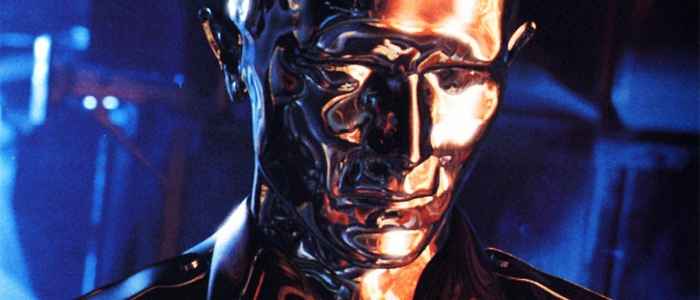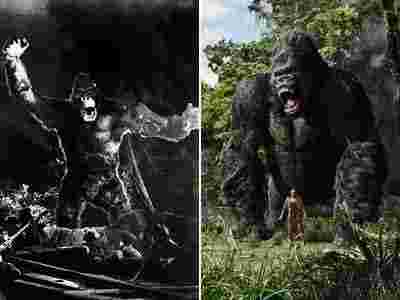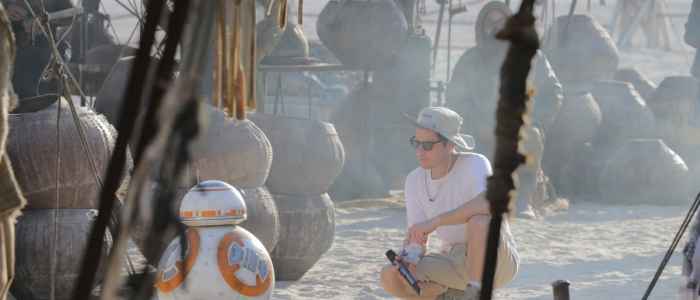Does CGI Benefit Special Effects or Detract From Them?
Back in the 90s, a new technological advancement in special effects was taking place not in the form of advanced animatronics or puppetry, but rather digital images. While it was first attempted in the Paramount film Young Sherlock Holmes, CGI started to become well-known to the public with ground-breaking movies such as Terminator 2: Judgement Day and Jurassic Park. Both of these films have demonstrated how you were able to create anything now and there were no limits except your own imagination. Industrial Light and Magic have been able to create all kinds of life, whether it’d be mechanical or prehistoric.
Many films have followed in their paths since then and through many ups and downs, CGI has become the industry standard for visual effects. There have been many debates on whether CGI is an improvement or a step down to what was previously established. The question that seems to be on everyone’s minds is if CGI has been taken for granted. In order to understand where filmmakers are today, it’s necessary to take a step back and see exactly what made Terminator 2 and Jurassic Park work.
Creating a Machine Through Computers
With Terminator 2‘s case, it was a followup to James Cameron’s own The Terminator a couple of years prior in 1984. After years of trying to find out the rights, James Cameron was finally able to shoot the sequel and he wanted it to be bigger than the previous film. In fact, so much bigger that it practically was 10 times the budget of the original film, rounding up to $102 million, which was the most expensive film at the time.
The main attraction that seems to be the centerpiece for all of the digital effects in this movie comes in the character of the T-1000, an advanced prototype who’s able to shape shift into anything it comes in contact with. We see throughout the film that he morphs with a silvery, metallic shine to him and as its body starts to fall apart, we see that his insides are made of that same material. These effects were made possible by digital effects company, Industrial Light & Magic. Nowadays, it might be a little easier to tell that some of the shots are computer-generated, but at the time, nobody was aware of how the effect was achieved. It’s all because the T-1000 wasn’t an entirely computer-generated character.
Animatronics maker Stan Winston had helped assemble many of the practical effects that are in this movie. Perhaps it was because Cameron thought that the digital effect would be obvious or it may have been a money issue, but he made the right call of blending these two together rather than favoring one over the other. Since they only had to use digital effects when there was no other possible way to achieve the effect, it only made those moments more special as opposed to being tacked on.

Resurrecting the Past with New Methods
Just as Terminator 2 broke new boundaries, Jurassic Park broke those boundaries as well as it took digital effects even further to bring dinosaurs to life. Steven Spielberg originally was planning to use stop motion to create the dinosaurs, but after seeing a tech demo created by Industrial Light and Magic, he was so impressed that he wanted them to do the digital effects for his movie. He used their technology to his full advantage, showing the dinosaurs not only at night, but in broad daylight, in all of its glory.
Jurassic Park had employed the same techniques used in Terminator 2 and combined practical effects with the digital ones. As it turns out, Stan Winston had provided the practical effects for this film as well. By this point, it was apparent that these two companies worked well together and could create works of art that had the potential to be expanded upon.

Milking It For All It’s Worth
However, overtime studios have realized that since CGI was pretty much limitless and you could produce just about anything, it seemed financially logical to focus their efforts on computer generated images as opposed to spending more money on physical effects. Today’s blockbusters, like many of the Marvel movies for example, use an extensive amount of digital images and green screen to film all of their action sequences. To most of the public, this seems like the next logical step. After all, everyone assumes whatever’s newer must be the superior one and that mindset applies to movies as well. If the audience sees something out of the ordinary, they’ll notice it immediately and might lash out against what they see.
In a way, CGI is being taken for granted, but it’s not because audiences can figure out what’s digital and what’s not. It’s because it’s the band-aid of special effects. It fixes any potential problems that could exist on set with practical effects. At the same time, it’s also more efficient for studios to invest in it both time-wise and financially. So why is there a group that decry the art of digital effects? Is it perhaps that they are simply stuck in the ways of the past or do they have a point? After all, their complaints seem to drive on that “too cartoony” or “too unrealistic”. While that’s not to say that practical effects can’t look just as bad as digital effects, there simply need to be a compromise.
The Same Story Retold Through New Techniques
Most of these arguments seemed to have stemmed from all of the remakes that have been released in the last couple of years. A prime example would be comparing King Kong, both the original 1933 version by Merian C. Cooper and Ernest B. Schoedsack and the 2005 remake by Peter Jackson. Since these films are decades apart from each other, there was bound to be many advancements in not only the special effects, but many aspects of filmmaking as well. The 1933 film used all sorts of techniques to bring Kong to life like stop-motion animation and using closeups of models of his limbs to interact with the cast. In the 2005 movie, Kong was portrayed by Andy Serkis via motion-capture animation. Ever since Jackson’s King Kong, there has been many debates on which audiences find to be better, the timeless original or the more sophisticated 2005 version. Each movie tried to push the boundaries as much as possible for the time they were made and while it’s understandable to see the 2005 film as the more ambitious project, it’s also important to understand how revolutionary the first movie was. For a 1933 film to feature such an advanced method of stop-motion, especially for a early sound movie, it was monumental for the time. As long as remakes honor the original in which they’re based on, then no matter how they choose to portray a giant ape, the story will still shine through. (Of course there’s the 1976 remake, but it doesn’t stand out in terms in advancements.)

Where Studios Are At Now
Studios simply need to plan out their budgets so they are more cost-effective. It’s possible to please both crowds if they are willing to compromise and try to find out what works with each kind and what doesn’t. In fact, there seems to be somewhat of a renaissance of practical effects, as movies such as Jurassic World and Star Wars Episode VII have advertised that they would contain traditional effects as well as digital effects.
However, despite this claim, many of the effects in those movies were still computer generated, with only a few seconds worth of animatronics. This shows that studios are listening to the demands of the traditionalists, but so far, it seems to be only lip-service since all of the CG touch-ups might have been just created solely on computers to begin with. There’s really no point in creating any sort of puppets if the end result has a digital look. Maybe it’s just the beginning of this revival or maybe not, only time will tell.

Special effects will continue to evolve overtime and some of the changes may be big or may not even be noticeable. There are all kinds of different filmmakers out there with all sorts of goals in mind. Filmmakers that purely work for the studio’s needs may go the digital way and those who have a passion for the art of film may go the traditional way. Practical effects have their place in films, just like how digital effects have their place. It’s up to those directors to see where special effects films can go from here.
What do you think? Leave a comment.











Excellent article, great read! I’m into 3D graphics, I love good CGI, but I also love practical stuff, maybe even more so in some ways. I love it when directors decide to use both though such as with Guillermo Del Toros films, that’s the way to do it
CGI is amazing technology, but it’s still just a tool in the kit. “Moon” was a great big kick in the face that caused me to remember how amazing Brian Johnson/Martin Bauer/Bill Pearson were back in the 70’s.
Great conclusion. The best is when novels like LOTR can come to life when directors like Peter Jackson give the movie such detail.
This is a fascinating article! I think the extent of filmmaker’s use of CGI debate is one of the major questions facing many big budget film’s today.
Great Article!
There needs to be a balance, and since The Force Awakens and Mad Max: Fury Road were released with their practical effects, the pendulum is starting to swing the other way. CGI definitely has a place. It should be used to enhance the practical.
Also, utilise your budgets, Hollywood! It still baffles me that Mad Max: Fury Road and Ghostbusters (2016) had the same budget.
It’s incredible how with CGI, companies from all over the globe can contribute to create really cinematically beautiful films! Like, I’m from Adelaide, Australia, and it’s nuts how companies like Rising Sun Pictures have helped in massive block busters such as X Men and The Hunger Games!
I think at the end of the day each one still has its place. For dialogue scenes I would prefer they happen on a practical set. Action scenes you obviously have to use CGI in a movie like Star Wars but its very important that you connect that CGI world to the practical sets you’ve built. It needs to feel like they exist together and no switch is being made between the two. The Force Awakens pulled this off brilliantly.
My problem with CGI is that it’s become cheap and ubiquitous, leading to really bad special effects, often when no special effects would even be needed. Some examples of bad CGI that turned me off to the effects: the first “Hulk” movie where he bounces around like a super ball, the Green Lantern movie, Indiana Jones and the Crystal Skull, and there are many more…
I’d really like to see a resurgence in miniature work – there’s a visual quality to it that, much like glass matte painting, ends up looking more real than reality, While I accept that perfect CGI is unquestionably able to deliver the most ideal images, I think that the majority of those efforts fall short as a consequence of time/cost/expertise and end up looking shoddy.
Overuse of CG comes in waves. Some films use it judiciously and effectively, but as time goes on it’s getting abused and becomes visually exhausting. A prime example of “just because we can doesn’t mean we should.” It’s like they’re creating the movie around the VFX.
Well… Practical effects went through the same stages. After Harryhausen there was an overuse of stop motion. After Rick Baker there was an overuse of monster makeup. After Star Wars there was an overuse of spaceship battles. Nobody really complained about that, it was just the way things were (and there were occasional gems in amongst them that made up for it). But now when it happens there is this blanket response of disliking CG, instead of disliking the over-reliance and abuse by specific filmmakers.
The bigger problem with CG is the disconnect between the DP and the actual visual storytelling, which is part of the reason that superhero stories rely so heavily on cover shots.
I watched the newer movie THE THING and the original THE THING back to back – this is a great way to see the 2 side by side. Immediately I noticed how well the practical stuff stood the test of time – I was still blown away and had no idea how they did some of the FXs. Seeing something well done (in rubber) run across the floor looks amazing because you can tell it’s really there. My favorite use for cg fx is the subtle. Not crazy alien from another planet – because none of us have seen one – so it’ll always look fake. But a bridge collapsing, wound damage, that kind of stuff is great. (Take note Michael Bay)
CGI is a tool, nothing more than a very clever airbrush at the end of the day. Making beautiful and compelling images requires an artist to wield their tools effectively. The best artists use the appropriate tools for the job.
I think whichever works the best and keeps the movie within its budget. I actually love when I am not sure if it’s CG or an actual prop.
There should be a balance between CGI and practical effects, and not a lot of movies get this balance right (e.g. “Lord of the Rings trilogy”, “Mad Max: Fury Road” and the new “Star Wars”).
As both a computer and practical modeler, I think a lot of the cause for “bad CG” is just simply the fact that time pressure hurts CG a lot more than it does practical effects. A single good practical artist can whip something up in a day of work that will be a believable simple prop. That just isn’t going to happen with CG. Sure, you might get it modeled in a day, but then it needs to be textured, match moved, rendered and composited into the shot. With all the time in the world, or an unlimited staff (neither of which is ever available to any film), CG can be breathtakingly beautiful, and indistinguishable from real shots. However, as those budgets get squeezed, it becomes a lot harder to “cheat” your way out of a tight spot, and maintain quality in CG, than it is with practical, at least in my experience.
Appreciate the good work done with CG. There is a monumental amount of it worthy of praise. Don’t dismiss it because of a few poor examples of it cropping up. We are still in an experimental phase, figuring out how and when to apply CG over Practical, so give it a break, and enjoy it when it works well.
i don’t think special effects are putting practical out of business even though in some cases now a days special effects are now less costly then practical, and more versatile. but i will always be found of movies that can use both and make it everything vibrant and alive and believable.
I like practical effects & special effects when done sparingly and not overdone to the point where story loses out.
I worked on “Cowboys vs. Aliens” and “Battleship”, where CGI was tasked with completing pretty much every shot. What I got from those projects was a sense that the filmmakers were being lazy – it was far easier to shoot some elements and turn them over for CGI treatment than it would have been to work out a practical effect. FYI the stuff that was passed on to post production was almost universally sloppy and very difficult to work with. The effects shots in those shows that look bad are nasty because there was little forethought put into the shooting of individual elements. A lot of the really amazing stuff is only there because individual CGI artists went without sleep and reasonable financial compensation for months.
There needs to be a balance between CG and practical. Jurassic Park is an excellent example of how to do it, even into the third movie. The raptors, for example, were done in CG for full-body shots and of them running around and being scary. But when it’s just the legs, or head, they used a puppet. In fact one shot of a raptor stalking up to a victim to snap his neck was done with a guy in a rig wearing raptor legs. Fantastic stuff.
The better CGI becomes, the more realistic the result. Films are becoming closer and closer to the impossible stuff of our dreams – and nightmares. I agree with the comments above though that vote for story over special effects. If CGI is used for its spectacular effects, over and above the dramatic potential of the narrative, I’d rather read a book.
CGI is good when done well and serving the narrative, good and strong characters, character development and interactions as well as main storyline are generally more important in my opinion. CGI, however, is something that I do definitely enjoy in movies, cases being Star Wars and the Marvel movies, where it’s necessary to bring the action to life in ways practical effects may not have been capable of doing.
The evolution of ILM and Lucasfilm, WETA etc have contributed to CGI and special effects bringing the imagination and creativity captured in books and showing it on screen.
In movies like Jurassic Park, Lord of the Rings, Star Wars and even cult tv shows like Buffy, Star Trek, Babylon 5 the special effects in those were brilliant for its time. Fast Forward post 2000’s and movies like Transformers, the newer Star Wars Films as well as the Marvel and DC it would appear are now reliant on CGI whereas before the CGI was more of an embellishment.
I think there are time when CGI is overused and detracts from the story telling. Either way, CGI is here to stay, though I do not want to see it replacing story progression or character development.
🙂
A mix of both practical and CGI seem to be the obvious go to but balancing them is the real issue.
Daniel, this is a great topic of discussion and I completely agree with your argument. Even in big budget movies like Star Wars Ep. VII and Guardians of the Galaxy, it is obvious when practical effects are not being used cohesively with CGI. Of course, there are many filmmakers who have found a balance, but most of Hollywood right now needs to learn that in order to make visual effects fit seamlessly into a film, practical effects are needed just as much as (if not more than) CGI.
I was actually discussing this the other day with a group while watching the old Hornblower series. It’s incredible because the first episode was made in 1998 but there’s something so real in the depictions of the boats and the sea battles. I looked it up and they used actual replica ships and a range of models including a 1.4 tonne model with working cannons fired by remote control! It’s funny that I’m so much more impressed by the look and feel of Hornblower, made in 1998, than the new Jungle Book with it’s colourful collection of CGI characters. Thanks for the great article, it’s interesting to know so many others also see today’s reliance on CGI as something of a step-down in film making.
This was a much needed analysis. However, from personal experience I can surely say that the more the effects, the lesser the efforts on storytelling. Case in point being films like Fast and Furious 8.
I still remember vividly the first time I watched Jurassic Park and fell in love with how ahead of its time it was. I bought the box set with special features which went behind the scenes into the CGI and animatronics which was really fascinating. Its a shame its so commonplace now its lost its effectiveness in that sense.